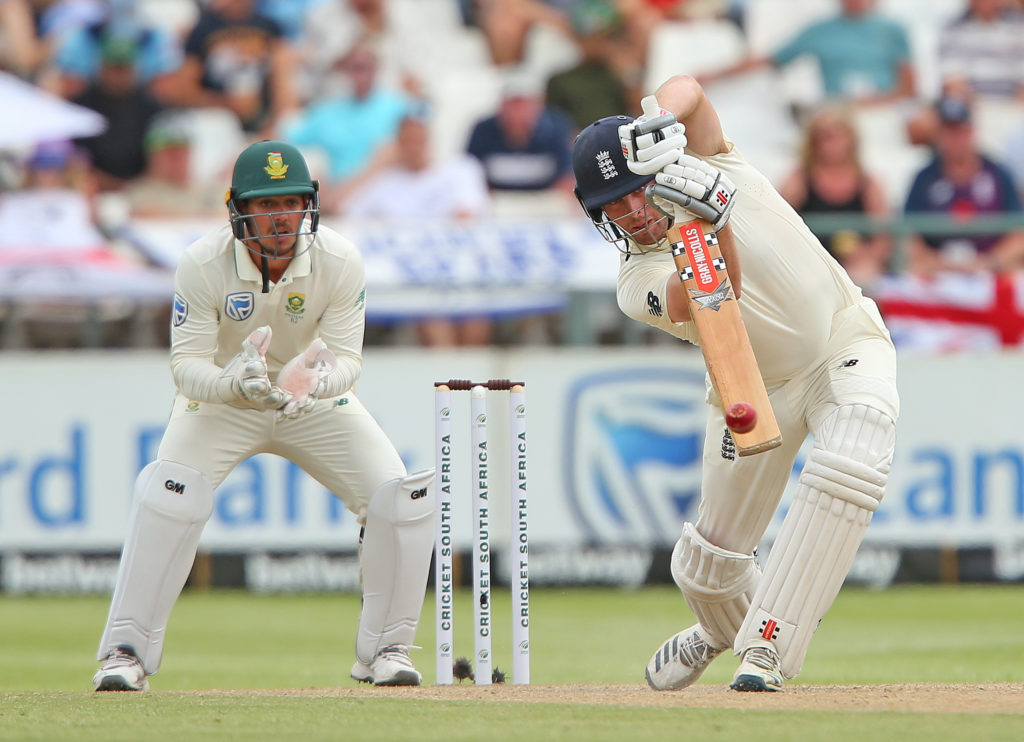The Proteas’ batting unit has struggled to score more than 300 runs in recent times, but they will need to dig deep when it’s their turn to bat, writes JOHN GOLIATH.
Dig deep to either try to win or, more likely as it stands, to save the second Test against England at Newlands.
There are two sorts of match-winning innings in Test cricket. The one is the knock South Africa’s wicket-keeper Quinton de Kock played in the Proteas’ first innings in Centurion where he came in during a crisis on a difficult track and flayed the English attack to all parts of the SuperSport Park.
READ: Clarity needed, as SA lose direction at home
While other players were struggling with the pace, bounce and seam movement, De Kock looked like he was batting on a piece of concrete. His 96 was maybe worth about 50-60 runs more in the context of the match. In the end, it was definitely the difference between the two teams in the Boxing Day Test.
Another example of a match-winning knock is the grinding innings England opener Dom Sibley played at Newlands on day three of the New Year’s Test. Unlike De Kock’s exciting, eye-catching stint, the Englishman’s time at the crease wasn’t about counter-punching or taking the fight to the opposition; it was about setting the game up and putting his team in a position to square the series.
England needed a batsman to blunt the new ball and then go on to occupy the crease for the entire day. A rarity in the longer format of the game these days. They needed someone to soak up the pressure and score precious runs to give their bowlers some valuable rest and then something substantial to defend.
Anything over 300 is going to be a big ask for this Proteas lineup to chase down, even though the Newlands pitch, which has been an absolute belter in terms of the competition between bat and ball, has appeared to flatten out.
The South Africans have struggled with the bat over the last year or so. They have only gone past the 300-run mark on four occasions in their last 17 Test innings. De Kock has been the Proteas’ best, with his cameos down the order saving the team from total embarrassment on quite a number of occasions.
The biggest concern is that the South Africans have been unable to produce the sort of innings Sibley played on Sunday on regular occasions.
New magazine issue: Why De Kock must bat at four
A hallmark of his knock was to leave the ball well, which forced the bowlers to bowl a bit straighter. The England opener then punished them with a few magnificent shots through mid-wicket, while he also played the short ball well.
In the first innings in Cape Town, and indeed in their first outing to bat in Centurion, the Proteas batsmen played at balls outside the off-stump which they could harmlessly have left alone. It’s like they wanted to feel bat on ball to gain some confidence.
The Proteas are throwing their hands at the ball and not playing their defensive shots with a dead bat. They look vulnerable outside the off-stump.
Sibley’s technique is an odd one, and looks like a prime candidate to nick off – he has been caught behind three times in this series already before Sunday’s knock – but because he left the ball well on Sunday he looked in control of the situation.
Some people would say Dean Elgar and Rassie van der Dussen, who rode his luck on Saturday, played similar innings, but Elgar uncharacteristically threw his wicket away en route to a really big score, while Van der Dussen didn’t pace his innings well and seemed to put his batting partner, Elgar, under pressure.
It’s going to take one hell of a chase to get the runs required to win this Test, but the Proteas can take a lot of lessons from Sibley on how to construct an innings and get the job done on this surface. It’s all about leaving well and putting the bad ball away.
It’s going to require patience and plenty of application, something the Proteas haven’t handled well over the last few years.







